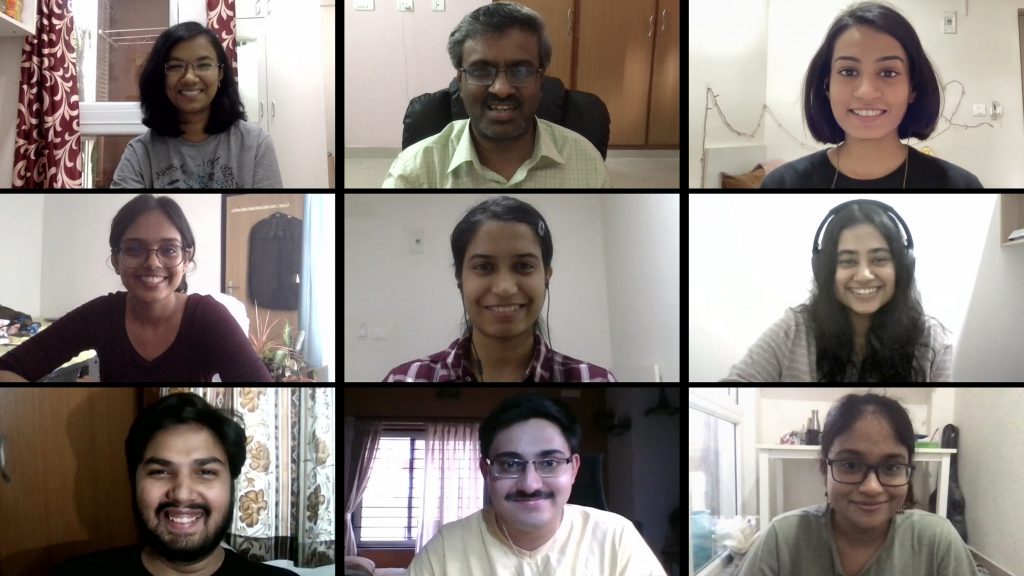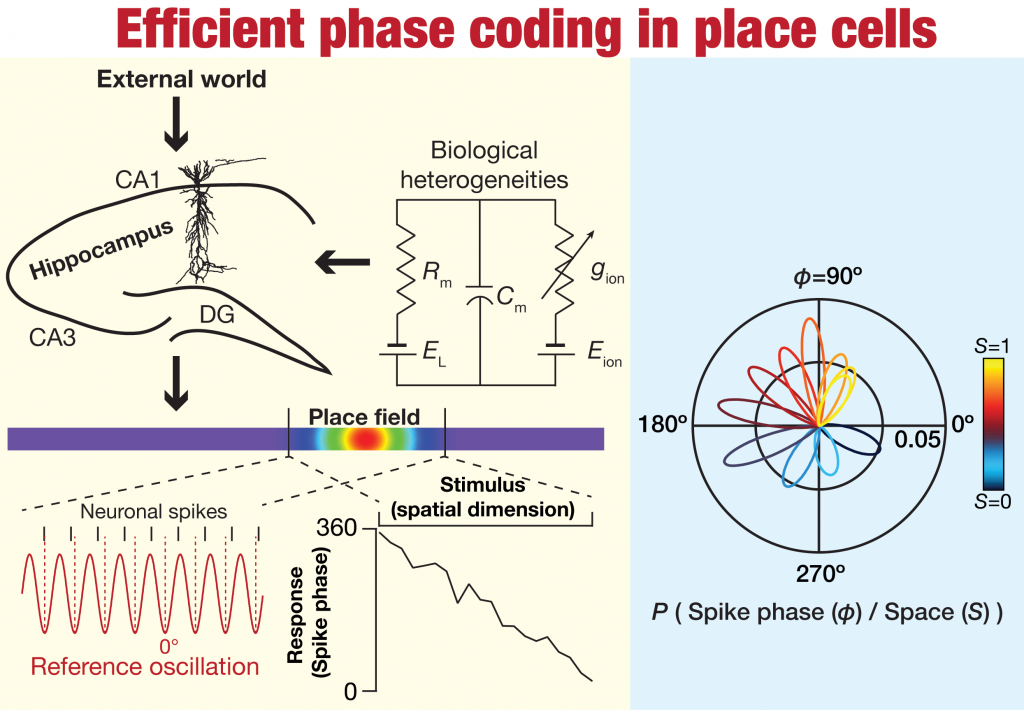
Scientists who study the brain look at it at different levels: from behaviour to neural networks, all the way down to individual cells, molecules and genes. Decoding each of these will eventually help us piece together the puzzle of how our brain works.
Rishikesh Narayanan’s lab at the Molecular Biophysics Unit in IISc works mainly at the cellular level, although they occasionally dabble in the molecular and network scales. Using computational and experimental techniques, they study how neurons and glia – the two main types of cells in our brain – function. They are particularly interested in investigating electrical activity in these cells, and the related mechanisms and functions, using a technique called electrophysiology. The group focuses on four different yet converging themes.
First, the lab investigates how neurons can produce the same functional outcome from different structural components, a phenomenon referred to as degeneracy in biology. Rishikesh and his students have shown how various molecules in the neurons, such as ion channels, can elicit the same functional outcome at the cellular level in different neuronal subtypes. They recently showed how, in a brain region called the hippocampus, different configurations of neurons and networks can produce the same kind of output or same coding efficiency.

Second, the lab is interested in figuring out how active dendrites work. Dendrites are small tree-like projections from neurons that passively receive information from other neurons – or at least researchers thought so till the early 1990s. But scientists later found that dendrites are “active” and contain “ion channels” – they do not just passively transmit the electrical signals across neurons but can generate them as well. Rishikesh explains that these dendrites can also actively filter incoming information before they reach the neuronal cell body.
Building on this modern idea, Rishikesh’s lab tries to understand how these active dendrites contribute to different properties of the neurons. Over the years, they have figured out some bits of the puzzle. For instance, the lab has shown that active dendrites change the extracellular electrical potentials in their vicinity, and that they regulate the manner in which different cells (neurons and glia) in the brain interact with each other.
Third, Rishikesh and his students investigate how neurons and their networks change with external stimuli. Specifically, they study how ion channels can participate in these changes – a phenomenon called intrinsic plasticity. Most researchers have placed the synapse – the connections between two neurons that allows messagesto pass – on a pedestal, as the sole agent that changes in response to stimuli (‘synaptic plasticity’) and, therefore, mediates cognitive functions like learning. But Rishikesh’s lab, along with many others, has shown that synapses are not alone, and that changes in ion channels do this too.
“We study how ion channels change in response to certain activity patterns, how they interact with the changes in synapses and together produce stable learning,” Rishikesh explains. The lab has also developed computational rules that explain how this crosstalk happens between synaptic and intrinsic plasticity.
Fourth, the lab works on understanding the cellular neurophysiology of spatial navigation – how our brain maps out and remembers where we need to go. Two kinds of cells in the brain govern this activity: place cells – neurons that respond to a specific location – and grid cells – neurons that elicit action potentials (electrical impulses) at multiple locations that together form triangular grids. Originally, researchers in the field thought that the inputs must be clustered at the same dendrite for the neuron to produce a sharply tuned signal that maps out a particular place correctly. But Rishikesh’s group showed that even dispersed signals converging on active dendrites are sufficient to elicit sharp tuning in place cells.
Rishikesh’s quest for understanding the brain began during his PhD at IISc. After his Bachelor’s degree in electronics and communication engineering, he joined the Department of Electrical Engineering at IISc for his Master’s under YV Venkatesh. He then stayed on to do his PhD in computational visual neuroscience as Venkatesh’s interest in biological vision inspired him to pursue a neuroscience career.
After his PhD, Rishikesh pursued his postdoctoral research in Sumantra Chattarji’s lab at the National Centre for Biological Sciences, Bangalore, and Daniel Johnston’s lab at the University of Texas, Austin, focusing on experimental neuroscience. He then returned to IISc in 2009 and set up his own lab to work at the interface of biology and engineering. In 2016, Rishikesh won the Shanti Swarup Bhatnagar Prize for his “contributions to the field of cellular neurobiology.”
Setting up his own electrophysiology lab at IISc was not easy, he says. “At that time, the neuroscience community in the Institute and the country was really small.” During those early years at IISc, Rishikesh received funding from a Human Frontier Science Program grant apart from the IISc startup grant. “But procuring the funds is only one part,” Rishikesh says. “Converting them to equipment takes its own sweet time.”
Rishikesh says that he prefers to procure different components from different places and assemble them in the lab. “It is an interesting process, but it takes time,” Rishikesh says. “I don’t purchase everything from one place. I get the microscope from one company, the amplifier from another, the micromanipulator from a third guy, and I write code to interface them.”
Having worked at the interface of biology and engineering, Rishikesh points out how neuroscience as a field is a melting pot of disciplines. “Students shouldn’t be apprehensive about their academic backgrounds in entering neuroscience research,” he explains. “A keen interest in learning new things, an attitude engrained in innovation and intellectual exploration, the recognition that there is no substitute for hard work, and the perseverance to rise from failures are at the heart of good science.”







